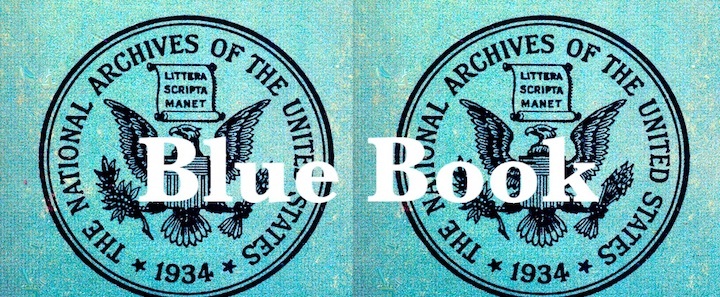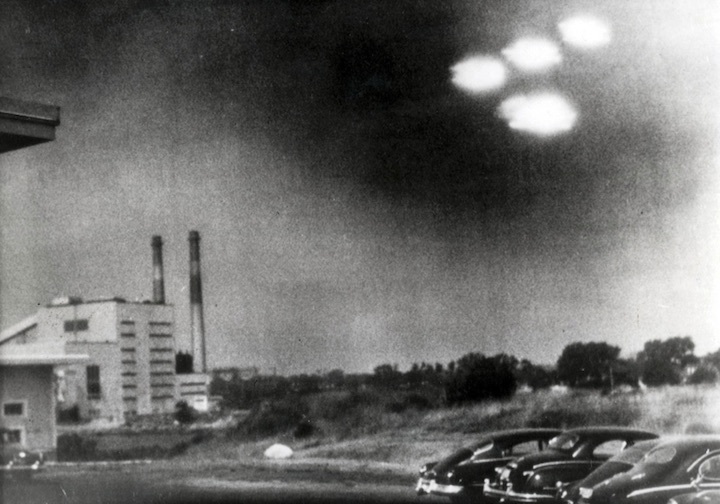15.07.2019

The 701 Club: Case 1501: July 16, 1952 Salem, Massachusetts
Don Berlinner lists the case as follows:

July 16, 1952; Beverly, Massachusetts. 9:35 a.m. Witness: U.S. Coast Guard photographer Shell Alpert. Four roughly elliptical blobs of light in formation photographed through window of photo lab.1
Sparks states the following:
July 16, 1952. Beverly, Mass. 9:35 a.m. U.S. Coast Guard photographer Seaman Shell R. Alpert saw several bright lights through a window screen (no glass) from his position inside the air station photo lab while cleaning a camera, watched them for 5-6 secs, called out to another Coast Guardsman, Hospitalman 1st Class Thomas E. Flaherty from sick bay to see. Objects dimmed then brightened suddenly, Alpert grabbed a camera and filmed 4 roughly elliptical irregular blobs of light in formation through the screen, on Super XX cut film 4 x 5 inch format, lens set at infinity, aperture f/4.7, 1/30 sec exposure. (Sparks; Berliner; etc.)2
I was actually surprised to see this case on the list of unknowns. It was always my opinion the case was explained.
The Blue Book file
The Blue Book file lists this as UNIDENTIFIED but they had plenty of reason to classify it as something else. In a reported written
3
August 28, 1952 , the follow items were noted:
-
While the sun is reflecting in the automobiles, the UFOs do not reflect in them. The USAF attempted to replicate this using a photo flood light. The cars reflected this light.
-
The USAF was able to reasonably replicate the images using a double exposure with some lights (see following page).
-
The USAF, in their report, stated there was reason to doubt the authenticity of the photographs.
In another section of the file, the following is written about the photographs:
“It is believed that the photographs represent light reflections from an interior source (probably the ceiling lights) on the window through which the photograph was taken....”4
The witnesses were interviewed and the following is a summary of what transpired5:
-
The photographer was sitting in his office examining negatives. When he turned slightly towards the window, he noticed the lights.
-
He grabbed the camera from his desk and tried to photograph the lights. At this point, he noticed they were dimmer.
-
He went into the next room and got the Corpsman first class (HM1) to come look at what he was seeing. When he returned, he noticed the lights were very bright again and took the photograph.
4. When the Corpsman arrived, he reported seeing nothing more than a quick flash of light and the lights were now gone6. He never saw the four lights and thought what he had seen was nothing more than a reflection of light from passing cars or off the ocean.
Analysis
The photographs have been discussed in various texts over the decades. Skeptics have stated that they were reflections and some proponents seemed to think they were authentic. Hynek, in his book “The UFO report” , agreed with the Air Force conclu- sion that it was a reflection in the window that was photographed.7
In my opinion, there is no reason to accept these photographs as being images of ‘true UFOs’. Instead, they are probably either “re- flections” or a deliberate hoax perpetrated by Alpert. I find it difficult that Alpert, as a knowledgeable photographer, could be easily fooled by reflections. While it may have been possible, I think he probably knew what he was photographing or had planned this ahead of time (with the first half of a double exposure already in the camera or by positioning himself so the reflections were visible). His desire to have a witness run in and “just miss” what he photographed could have been part of the plan to create a convincing image. It is important to note that Alpert had attended the Art Center school at Los Angeles8, where he might have learned the art of double exposure photography. Even if he had not learned it there, learning to create a hoax would not be hard. All it would have taken was some experimentation prior to conducting the exercise. Had the resultant photograph not looked convincing, he would never have had to come forward and would have told the corpsman that the photograph did not turn out.
Conclusion
In my opinion, this case can be explained as a reflection on the window or a hoax. Either the witness did not recognize these were reflections or he thought he could get away with a hoax. I am not sure why Project Blue Book did not follow its instincts on this case but it probably had to do with negative publicity. This case should be listed as explained.
Quelle: SUNlite 4/2019
